This is a sponsored post.
Sustainability and environmental impact is a huge topic in everything these days, and it’s a tricky topic. It’s obviously something that the vast majority of us care about, but a lot of companies are approaching it in a way that’s easy to market even though it doesn’t make a lot of scientific sense. There’s a ton of greenwashing going on – you’ll have seen me debunk greenwashing myths before.
Today I’m going to be talking about a brand that I think is approaching sustainability in a really holistic, innovative and transparent way: Emma Lewisham. This video and blog post is sponsored by Emma Lewisham – they gave me early access to information about their innovations, but as always these are my genuine opinions. As we go through them, hopefully you’ll see why I decided to work with them.
The video is here on YouTube, keep scrolling for the blog post…
Emma Lewisham’s Holistic Approach
Emma Lewisham is a high end natural skincare brand from New Zealand. I personally don’t really care if the products I use are natural or synthetic, as long as they work well – and Emma Lewisham products do work well, which I’ll talk about a bit later. But first, let’s talk about the very cool work they’ve been doing in sustainability!
I think there’s always been this pattern in how the beauty industry tends to “do” sustainability. Brands often point to one small thing they’re doing and claim to be environmentally friendly, and that seems to be it. They’ll tell you nothing about the rest of their business.
And a lot of the time, that one thing seems environmentally friendly at first, but might not actually pan out to be all that good when you look deeper into it.
Emma Lewisham approaches sustainability in a much more holistic way, with a carbon positive, circular designed business model.
Carbon positive
Let’s start with the “carbon positive” part.
This is kind of confusing: carbon positive, carbon negative and climate positive all mean pretty much the same thing – there’s more greenhouse gases removed than emitted. Generally this is done by measuring emissions and then offsetting them by investing in projects that remove greenhouse gases from the atmosphere.
Offsets can be controversial and misleading. The greenhouse gas removal can take years to happen, or doesn’t end up happening at all. Sometimes, offsets can act like a licence for companies to keep polluting as much as they want while still seeming environmentally friendly, as long as they pay a small fee. On top of this, it’s impossible to offset all of our past and current emissions – reduction has to happen.
Emma Lewisham are the first business to be certified Climate Positive by Toitu Envirocare, a New Zealand government owned science-led environmental organisation. The way this certification works is very comprehensive and quantitative, and it’s very clear that reducing emissions is the primary focus.
To be certified climate positive, a company needs to firstly measure their direct and indirect carbon emissions across their value chain. This obviously includes all the emissions from the energy they use in making products, but also for producing and transporting raw ingredients, transporting finished products to stores and customers, making the product packaging, and dealing with packaging after it’s been used.
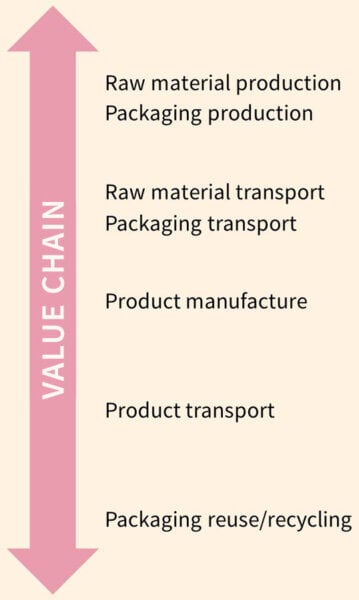
The company has to commit to reducing their carbon emissions to line up with Paris Agreement goals. Their progress gets monitored every 3 years to make sure it’s a continued effort. This includes working with suppliers to reduce impacts outside of the company’s direct control, since these supply chain emissions are often many times higher than direct operational emissions (on average, supply chain emissions are >90% of the company’s total emissions).
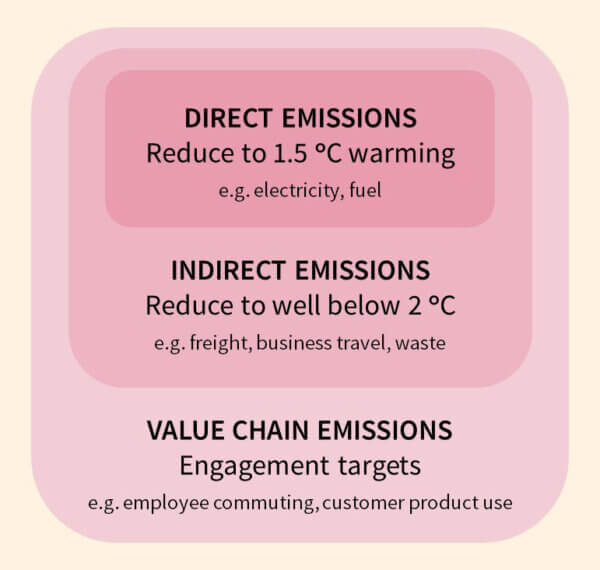
The company offsets the remainder plus at least 25%.
Finally, the company has to invest in projects that help the wider sector or society decarbonise, make a just transition or adapt to climate change impacts. This is set at greater than 75% of the offset amount.
Unsurprisingly, there are lots of different strategies Emma Lewisham use to get to this stage, and any of them would probably make a good marketing story on their own. For example, they use 100% renewable energy in manufacturing their products and their boxes, as well as powering their offices. They’ve set up distribution centres in their biggest markets to reduce transport emissions. Every product has a carbon emissions score to let customers know the climate impact of their purchase. They also plan to halve their products’ carbon footprints by 2023, and have them at virtually zero by 2030.
The biggest piece of the pie though, is with their packaging. Here’s where the circular model comes in.
Circular Packaging System
Packaging is the biggest source of carbon emissions in the beauty industry – single use packaging is estimated to contribute about 70% of total emissions.
On top of this, there’s the waste issue. The beauty industry uses a lot of complex components in packaging, because a lot of formulas (especially highly active formulas) are unstable without things like pumps and opaque containers. But this means that a lot of it is too expensive to recycle, so if you put it in your normal recycling bin, it ends up in landfill anyway. The result is that most beauty packaging isn’t being recycled, even if it claims to be 100% recyclable.
To solve these issues, Emma Lewisham have created their own circular system, where all the products are refillable. Most products come in jars – three in airless pump jars and one in a regular jar. All of these use refillable pods that slot into a base jar and top, which are designed to be used over and over. The pods are made from post-consumer recycled plastic, so it financially supports the recycling of other containers.

The rest of the products come in glass bottles that can be refilled with pouches. This means you still get the benefits of glass packaging, but the heavy, fragile bottles don’t have to go back and forth as many times, so there’s a lot less emissions and risk of product loss. This new packaging produces 74% less emissions than their old single use packaging.
The “circular” part is that Emma Lewisham accept back all their packaging at no cost to customers through the Emma Lewisham Beauty Circle program, available worldwide. Once you collect enough empty products to make the carbon cost worth it, you ship them back to Emma Lewisham free of charge.
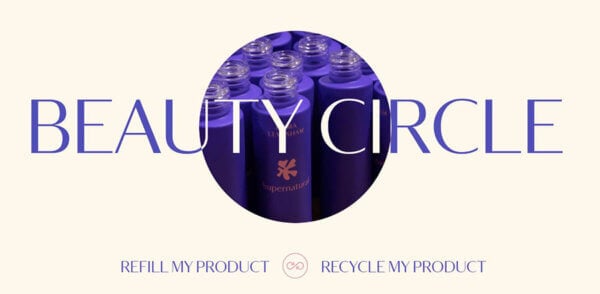
Most of the packaging is then sterilised and refilled. Recycling is the last option, since it requires more energy than reusing – when a container can’t be used again, Emma Lewisham pay to ensure it’s recycled through Terracycle, a specialty recycler.
Currently 79% of their packaging can be sterilised and refilled. The only thing that can’t are the refill pouches, which get recycled.
Sharing of intellectual property
This whole system is really cool and well thought out, but I think the thing that impressed me the most is that Emma Lewisham are sharing all of the intellectual property on their circular model online. This is so other brands can take advantage of their investment, especially smaller brands that don’t have the financial ability to switch to more sustainable practices otherwise. The shared IP includes their sterilising processes, how they deal with recycling and returns, packaging supplier info, take-back procedures and carbon calculation guides, as well as the designs for their refillable packaging – each mould cost $10000 to develop, so it’s not a cheap process.
A lot of things in the beauty industry are kept very secret, so this is really unusual and I think it speaks to their real commitment to sustainability – not just for marketing their own products as better than their competitors’, but to actually improve the way the industry works. They’ve also recently been endorsed by Dr Jane Goodall.
Product reviews
Onto the products! Emma Lewisham is best known for their highly active natural products.
I’ve mentioned this a few times before, and I think it’s pretty obvious now – one of the big issues with eco brands is that the products often don’t perform as well as other products on the market, and this is especially the case with natural products. If the products don’t work well, people aren’t as likely to buy them, which means that any environmental impact they have is going to be limited because people don’t end up using them.
But Emma Lewisham have really cult status products even without that environmental aspect. They’ve also hired an independent testing lab to perform in vitro lab tests as well as clinical studies on actual people’s skin to make sure their products are actually effective, and the details are on their website.
(A side note: Emma Lewisham did start off as a brand that marketed itself as clean, but they’ve changed their focus radically – partly because they watched my content. I was reluctant to work with them at first because of the clean marketing, even though their environmental initiatives and their products sounded really cool, but I think they’re genuinely trying to fix that part of their marketing. Every time I go on their website, I see less and less stuff that I have an issue with.)
Skin Reset
Their most famous product is probably Skin Reset. This is a brightening serum for people with hyperpigmentation issues. It has everyone’s favourite soothing ingredient niacinamide (vitamin B3), as well as a patented plant stem cell extract that’s been found to have interesting activity in vitro. There are also a bunch of hydrating ingredients, like prickly pear and sea buckthorn oil, edelweiss extract and hyaluronic acid.
Skin Reset was developed when Emma was looking for an alternative to hydroquinone to use when trying for a baby – hydroquinone isn’t recommended when you’re pregnant. Skin Reset’s been tested on melanocyte cells along with 9 other competitor serums, and was found to be active, but without killing the cells. Obviously the way products work on your skin isn’t the same as how they work on cells in a dish, but it’s a good sign. Skin Reset’s also been tested on people’s skin, and after 12 weeks 88% of participants said they noticed no new hyperpigmentation, and 77% rated it effective at reducing hyperpigmentation.
The big reason why Skin Reset’s been so popular is that it’s really gentle while still being effective. It’s my favourite product from their range. I get a lot of pigment after acne, and almost every pigment product I have is irritating apart from my niacinamide products – this is a niacinamide product but with a bunch more stuff, and I don’t need an extra moisturiser with it.
Supernatural 72 Hour Crème
Emma Lewisham’s other really famous product is Supernatural 72 Hour Crème. This is an intensely hydrating night cream with anti-aging actives that help with skin firming and texture.
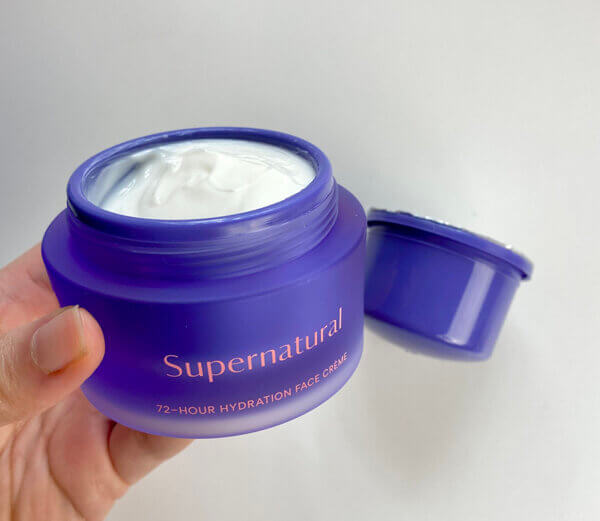
The star anti-aging ingredients are bakuchiol and Alaria esculenta seaweed extract – again, these don’t cause as much irritation and sensitivity as a lot of other anti-aging ingredients tend to do. There are lots of really moisturising ingredients too like saccharide isomerate, a really effective humectant that holds onto water and gives prolonged 72 hour hydration (it shows up in a lot of Emma Lewisham products).
Supernatural outperforms a bunch of leading luxury antiaging skincare products in in vitro cell studies, and has impressive results in clinical studies too. I really enjoyed this cream over winter, it has a rich texture that spreads nicely, so you don’t need to use much for it to hydrate skin well.
The rest of the range
Supernatural Face Oil: has anti-aging plant ingredients like bakuchiol and Swertia chirata extract in a really luxurious oil base, high in linoleic acid-rich rosehip oil and kalahari melon oil
Illuminating Brighten Your Day Creme: has plant extracts containing vitamin C and AHAs (yes, you can use hydroxy acids during the day), hydrating saccharide isomerate and ceramides
Illuminating Exfoliant: a creamy hydrating wash-off product with jojoba wax beads and hydroxy acids
Illuminating Oil Cleanser: a really lovely and rich emulsifying oil that melts away makeup quickly
Skin Shield: SPF 30 zinc oxide sunscreen, has a bit of a white cast like most zinc oxide sunscreens but otherwise really nice, with a creamy texture and lots of active and hydrating ingredients
The products are all really luxurious. They do have a botanical-based floral fragrance which is a bit on the stronger side – pretty typical strength for natural skincare, but if you’re used to more clinical products it’s a bit different.
Verdict
Overall, I’m really impressed. I think Emma Lewisham have done a lot of really amazing work in developing natural skincare that’s effective, and then also this incredible carbon positive business model. The refillable packaging and the systems for making sure customers can easily complete the circle is really well thought out – a lot of circular systems fail because that link is missing. It needs to be as easy as possible for consumers to complete the circle.
On top of that, sharing the IP as well is a really fantastic move. There’s so much that’s not transparent in the beauty industry, and it can be really difficult to work out what brands could or should be doing, especially for small companies starting out.
I think a lot of us are getting frustrated with how the beauty industry tends to claim they’re being environmentally friendly by taking small, isolated actions that aren’t well thought out or evidence based. But I think Emma Lewisham is a good example of how a beauty brand can work differently, and I hope other brands can take some inspiration from this and re-examine how they operate.
References
Emma Lewisham Beauty Blueprint
Emma Lewisham Sustainability Strategy
Toitū Climate Positive Concept Paper
This post is sponsored by Emma Lewisham; however, the content is all based on my independent research and my honest experience. For more information, see Disclosure Policy.


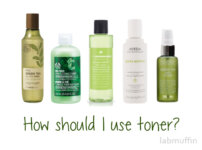

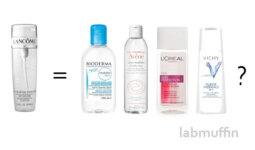

I m surprised you recommend this cream since it has so many extracts and essential oils who can iritate our skin and therefore damaging our skin barrier.
Extracts and essential oils aren’t universally irritating, it’s a massive overgeneralisation – they’re both extremely broad categories and concentration effects are important.
Would you consider doing some articles on antiperspirants and deodorants? If so, please also discuss male vs. female products? Are there any fundamental differences, other than marketing (including fragrance)?
Thank you.
Thanks for this review Michelle, it made me feel quite positive! I’m extremely minimal with skin care and had practically given up on brands (Ii use bulk jojoba oil and glycerine!). I don’t know if my routine is effective but at least I use it, it’s cheap and I’m not ending up with tones of packaging. After seeing this video I’m actually keen to try Emma Lewisham. The only issue may be price now. I’m so impressed with their circular recycling and even more with the open source! Cass
That is really interestng. I get frustrated with all the sustainability discussions, the whole glass vs recycled plastic debate and the fact that at least here in Germany most stuff that got properly recycled is shipped off to another country and the burned there. At the same time I don’t want to stop trying new stuff, which would of course be sustainable, so seeing that some brands really make an effort AND are willing to share what they have learned.
Hi, I went to the Emma Lewisham website and they have a lot of information about sustainability etc, what they don’t have is a listing of the chemical ingredients of their individual products.
They do say that they don’t include Parabens and a few other things. I’m allergic to parabens so that’s good but I also react to niacinamide and a few other things. So I won’t be buying their products. I wouldn’t be surprised if other people with allergies and sensitive skin say exactly the same thing.
I do enjoy your your videos and articles, thank you for all your hard work.
Regards
Judith
Hi, Michelle hope you are doing great. I have a query regarding the sunscreen filter avobenzone. Even though you have said it has a good uva range protection and unstable, but can be stabilised in the formula. why do you still prefer new filters for uva? Is a sunscreen isn’t reliable if it uses avobenzone solely for uva protection, even though the brand says it’s a photostable formula. I’m curious because my skin types is similar to you, oily and hyperpigmentation prone.
I mostly prefer them because so few brands show what tests they did for photostability (since there’s no standardised test) – it’s often tested for short periods only, although some brands test it for longer. Given that I tend not to reapply sunscreen most of the time, it’s easier just to go with a guaranteed formula from the start.
Thanks for your reply Michelle, and I understand.
I just have a another query, if I end up applying more of the sunscreen with pa+++, can I get a uva protection equal to pa++++, just like how spf works with the quantity we apply?
Can you please surmise about a uva filter called neo heliopan ap(. It is featured as one of the new generation uva filters( in your blog page), but there ain’t much talking about it. Some source says it provides uva 1 and uva 2 protection whereas some sources like inci decoder and symrise(that manufactures and sells neo heliopan ap) says it’s an uva 2 absorber and has to be combined with avobenzone for full spectrum uva protection. I actually use a sunscreen that is labelled spf 50 and pa ++++. But use neoheliopan ap as only uva filter along with octinoxate and ensulizole for uvb. So I’m skeptical about uva 1 protection from this sunscreen. Enjoyed your sunscreen reviews in this blog
Thanks for reviewing the Emma Lewisham line, I was curious about it. I’m very aware of the need to reduce my use of overly packaged and transported items. Beauty products are one of the hardest areas to change and there is no holy grail brand out there yet. I’m a Paula’s Choice devotee because her products are great, but they come with a high carbon footprint from transportation and packaging. I’ve been looking for good products more locally, and I did try the Ausceuticals Vit C serum you recommended over the PC recently, as it is Australian, well priced and sounded good. PC nails that packaging better though as she uses the glass bottle and rubber dropper. It’s hard to get it all right! So Emma Lewisham is appealing because it’s more local and their approach to packaging is commendable. No one else is doing this. A couple of issues stood out to me however. I know Paula would baulk at the jar packaging for the 72 hour cream, and also the citrus-based fragrances in the majority of products. I also wondered about the refill sachets, are they post consumer recycled? Love to hear your thoughts on those issues.